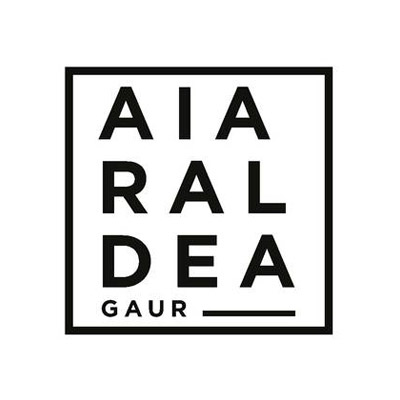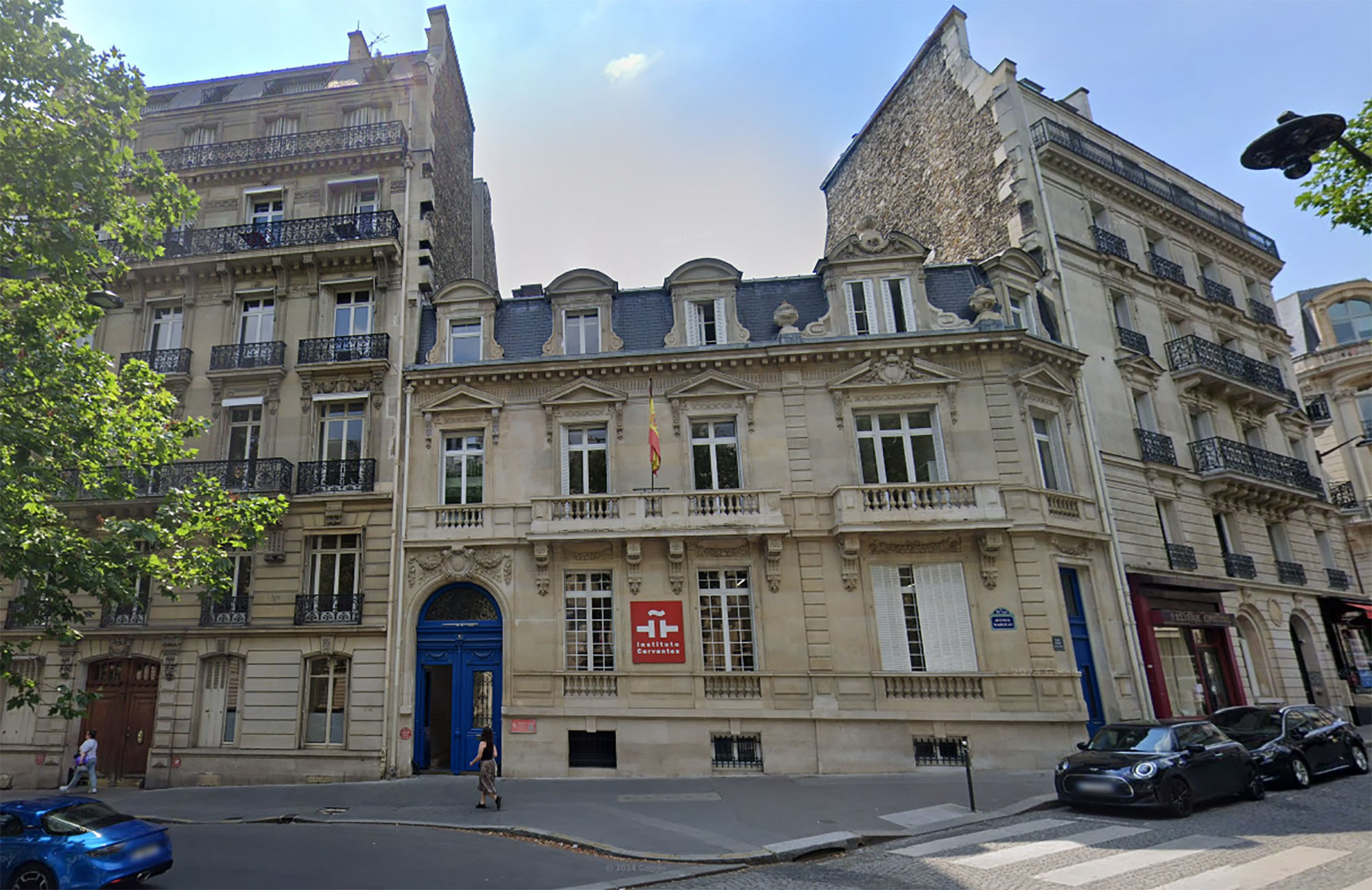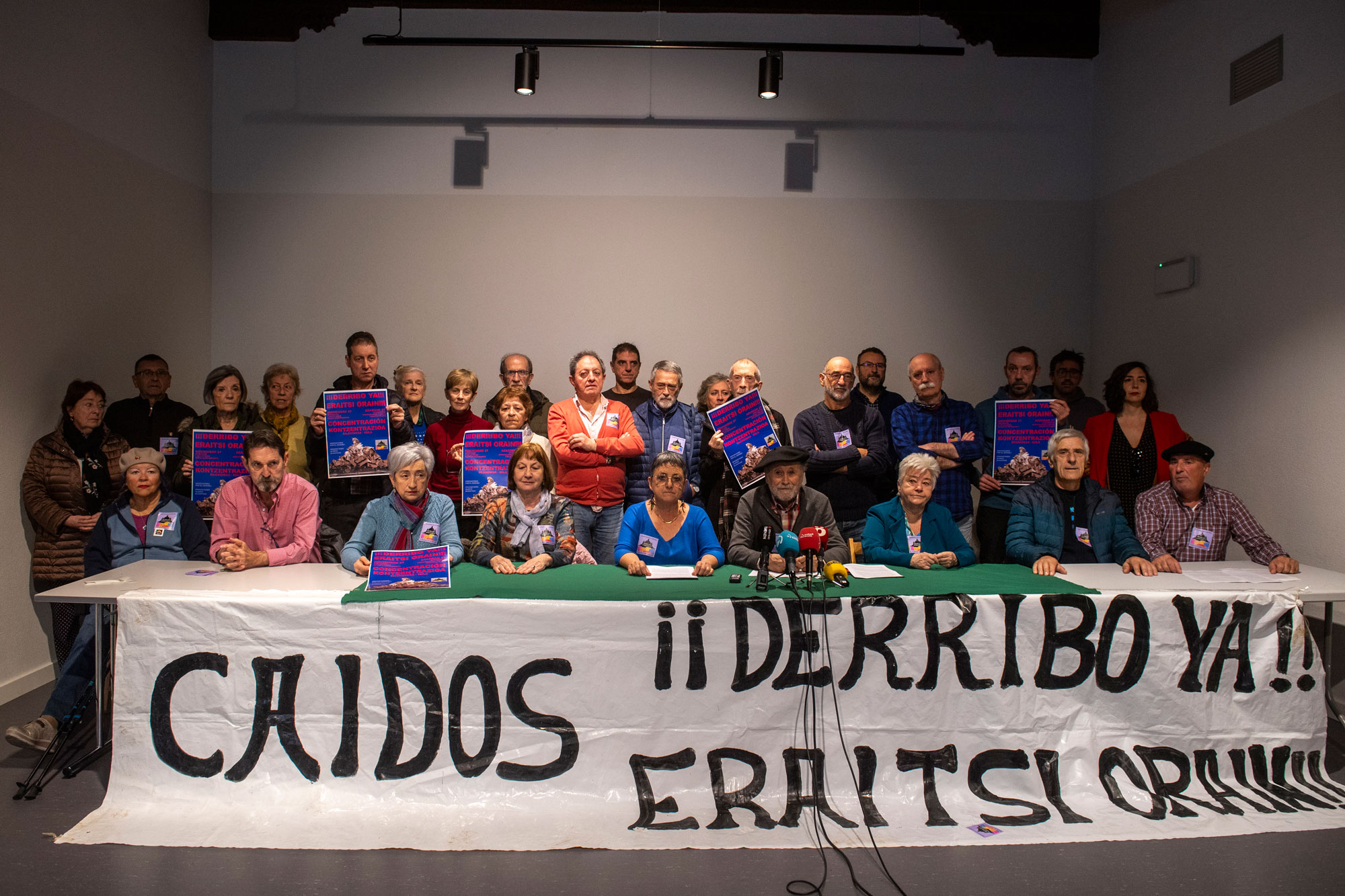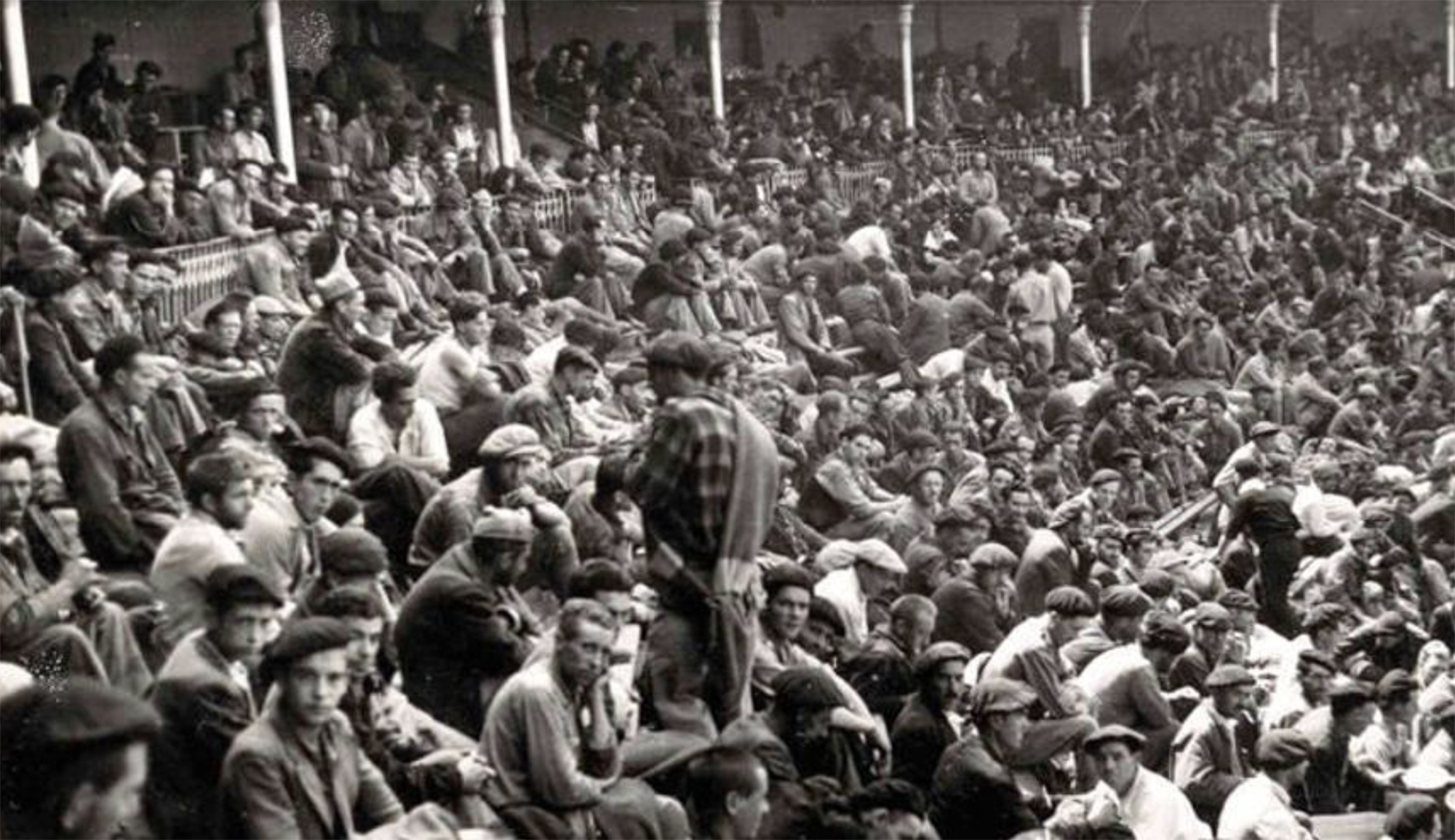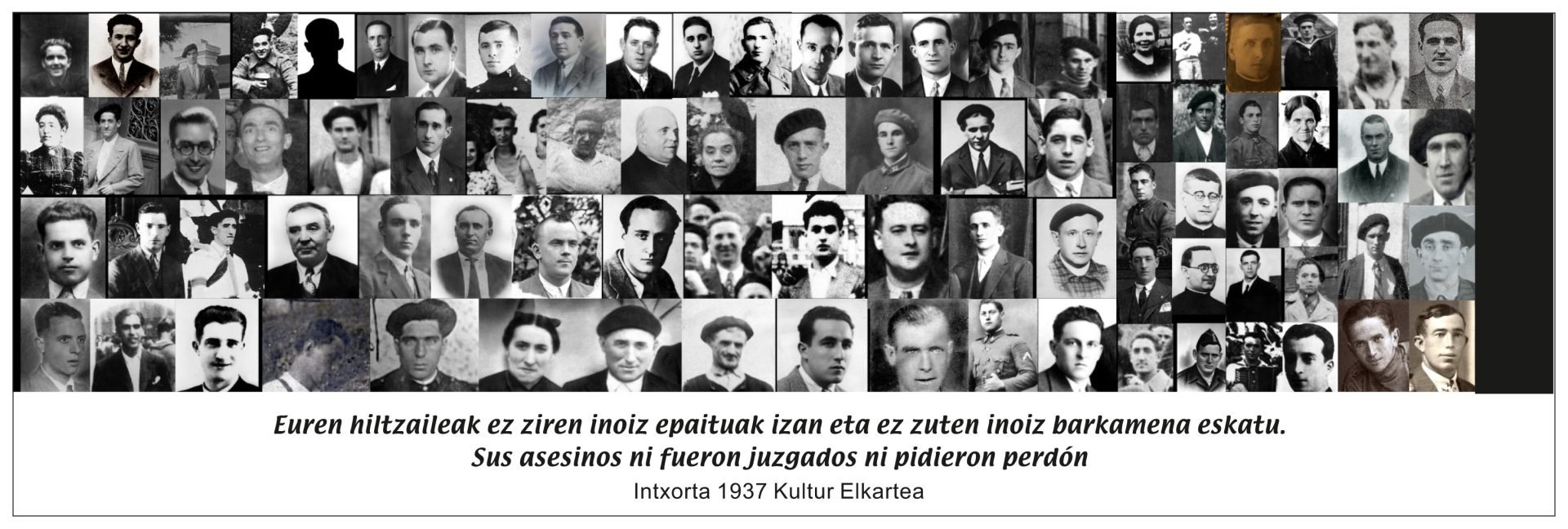How has this book been created? As we know, your intention was to write a book, but not exactly this.
Yes, the process was growing. Little by little we were discovering that there had been a civil war here and that few people knew it. I started working with Luiso López, who is the soul of the project, and we started looking at the traces and traces of war.
Throughout the region there are a lot of materials, from Gorbeia to Artziniega there are over 130 catalogued trenches, and surely there will be more, which we have not found.
So we went to see the material remains, explaining how they got here and why. Luis received many testimonies from those who experienced the war. She started collecting memories of her childhood and the stories of her parents.
But I picked up what was in the archives, which were scattered, and what I had published in the newspapers at the time. With these two starting points, written and oral memory, we thought we would write the book.
“Over 130 outbreaks cataloged from Gorbeia to Artziniega”
That was the initial intention.
Yes, the process was lengthening over time. One year the Gogora Institute told us it would give us financial aid, but it was too late to do the job.
In the end, we decided to make the book, and we found it interesting to bring together more people.
On the one hand, the historian of the UPV/EHU Josu Santamarina is doing something alive excavating Mount San Pedro and we wanted to take his point of view to explain how the world of archaeology is and what the current approaches are. We wanted to give it the news, because the debate on historical memory is alive in society.
We also invite Asier Pérez de Eulate “Basurde”. He is an expert in civil war weapons and has participated in numerous groups: Aranzadi, Sancho beurko... The Basque Government, not counting on the army, acquired all kinds of old weapons in the black market and stayed in the war camp with a lot of weapons and bullets.
Through the graphs he explained in the book what weapons, rifles and pistols were used in the republican part. This is relatively new, as no research on armaments has been carried out in the CAV. In the Spanish State as a whole, the situation is also similar. It is about infantry, artillery has not been analyzed.
Finally, Joseba Egiguren wrote a paper on the concentration camp in Orduña and has continued his research work. Once the book has been written, they have sent you more information.
Luis, using oral testimonies, has completed the report on the facts and memory. He has also made a paragraph on the trenches: map, plans... Finally, I have a job, almost half a book.
“We wanted to update the work because the debate on the historical memory is alive gizartean.Hala, we have not addressed the issue of repression”
What exactly is your part?
It's a chronicle about the Upper Neron War. This is a daily chronicle based, among others, on the archives of Salamanca, Madrid, Ávila, the Diputación and the Sabino Arana Foundation.
I have also used the press of the time, until February 1937 censorship was very scarce and there was a lot of information. That's during the Republican. All parties and unions created their newspapers and it is a very interesting time when it comes to journalism. On the national side, except the masses, in the press there seems to be no wars.
There are thousands of books about the Civil War, but there was nothing written about this region. Everything was awoken. All of this I have gathered in this work, especially in the three areas: the attempt to take Orduña in August, the battle of Villareal and the struggles of San Pedro in May 1937. I think the research is quite complete. We have used the modern concept of Nerbioigoiena to cover the entire region. In any case, with this book there is a reference and from there you can do more research.
I think the great virtue of this book is that it fills the gap that historically existed. We have not, however, addressed the issue of repression. This is a very different passage and I do not know if it will be possible to receive everything. For example, Angel Larrea has tried this at Laudio, and new data is constantly coming out.
When did they give the push to the book?
The material we liked years ago. We started two years ago, but we stopped it, because we didn't find any help. A year ago, on the other hand, we were given a subsidy, but there was no time to finish the text, as they replied to us very late. This year Gogora has helped us and we have had time.
The deadline was 30 March and we have barely arrived, although in a short time Josu, Joseba and Asier have finished their contributions.
My part has been more difficult, as in the winter of 1937 there were fighting artillers alone and there were few things to tell. I have only looked at military matters. The book can be purchased for 12 euros in the places where Arrastaria magazine is sold. In fact, we did two presentations in Amurrio and Orduña, and there was an opportunity to get them. We also want to present it at the headquarters of the Gogora Institute in Bilbao. It seemed to us that, given that they have put the money, it was appropriate to present it there, but they do not, apparently.
This interview has been posted by URL1 and we have used the CC by-sa license to bring it to ARGIA.



